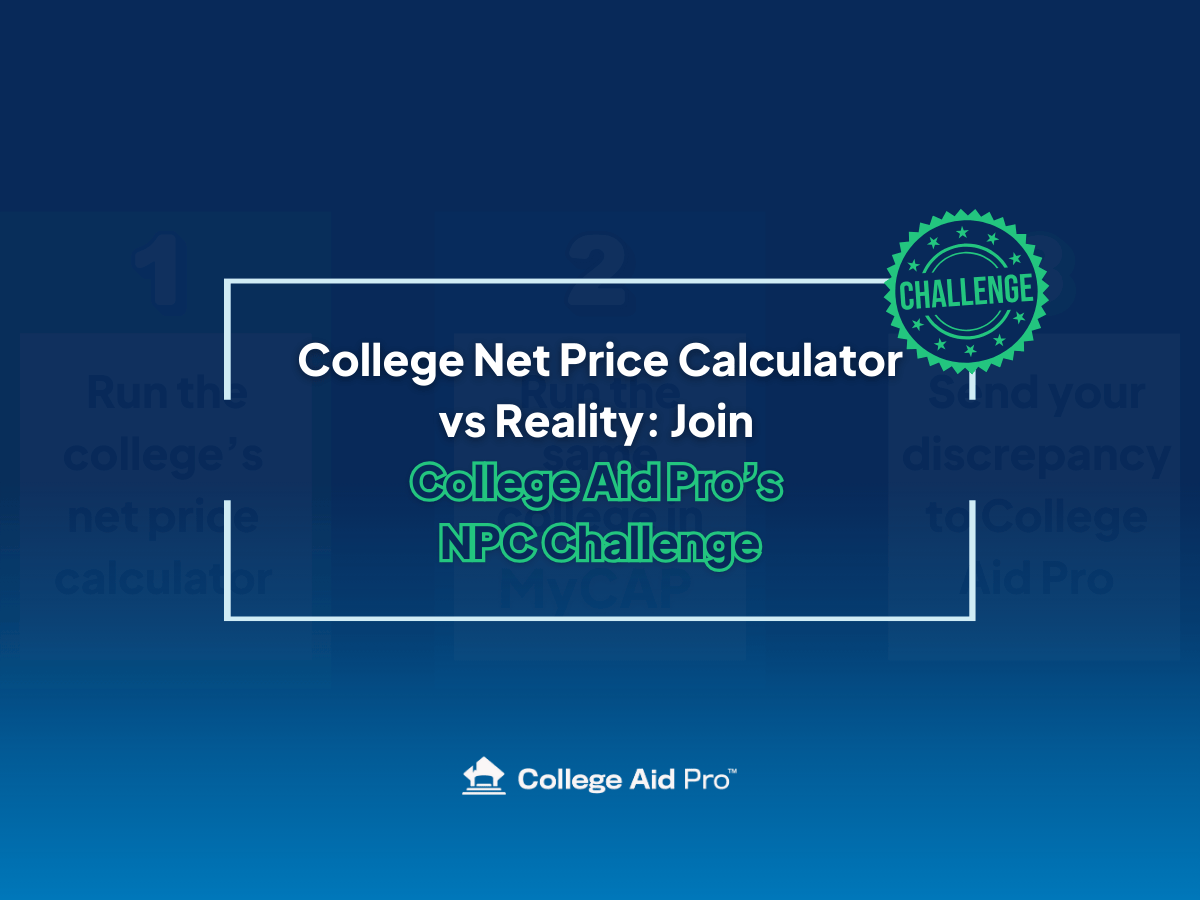Financial Aid for Divorced or Separated Parents: FAFSA & CSS Profile Guide
Financial aid forms can seem tricky for any household, but this is especially true for students who have divorced or separated parents or two household families. Throw into the mix the fact that different Colleges and Universities require different financial aid forms, and you make the situation even more complicated. Not to worry – there is an easy way to get answers. Read on to learn how your situation should be handled on both the FAFSA and the CSS Profile.
Knowing how the two most common financial aid forms approach your specific situation will give you a leg up when creating your school list and filling out these forms. Many students end up needing to complete both the FAFSA and the CSS Profile, and they do not always look at each family the same way when collecting information.
First things first….
Am I A Dependent Student?
This guidance pertains specifically to students who are considered dependents for financial aid purposes. In simplistic terms, dependents refer to anyone who relies on others for basic needs like money, food, clothing, etc.
The FAFSA assumes every student is dependent unless they meet certain criteria including, but not limited to, being at least age 24, married, an orphan, an emancipated minor, or someone with their own legal dependents (children).
The CSS Profile determines dependency status through a list of questions and then will direct you to complete the appropriate information based on your answers. Therefore, you may be considered independent for FAFSA but not for the CSS Profile.
Learn More about Parent/Dependent Relationship: Parents and Dependents: Clarifying Relationships in Financial Aid Reporting
If I am a Dependent, – Who’s Financial Information Must I Include?
Depending on which financial aid application you are completing, you will need to report financial information from various parents/guardians.
I’m Filling Out The FAFSA
For purposes of the FAFSA, include information on applicable biological parents, adoptive parents, legal guardians, and sometimes step-parents. The FAFSA only requires information on your custodial, or, typically, the parent a child lives with most of the time. If the custodial parent has been remarried, the FAFSA will require information on the step-parent, too.
Different Scenarios and How to Fill Out the FAFSA
2023-2024 Filing Year
Both Parents Live Together – Even if the parents are divorced or separated, if they live together, both should report their financial information.
- If Divorced and live together, select the marital status “unmarried and both legal parents live together”.
- If Separated and live together, select the marital status “married or remarried”.
Parents Live Separately But Still Live As A Married Couple – Report financial information on both parents.
Parents Live Separately and Are Separated Or Divorced
- Student lives most of the year with one parent – Include financial information from the parent (and step-parent, if applicable) with whom the student resides most of the year.
- Student lives with both parents equally during the year – Include information on the parent (and step-parent, if applicable) who provides more financial support for the student.
What else you need to know for the 2023-2024 FAFSA: FAFSA Changes 2023-24: What You Need to Know
For 2024-2025 Filing Year And Beyond
Moving forward, the FAFSA will require families to report the financial information on the parent (and step-parent, if applicable) that provides the most financial support regardless of who the student lives with most.
Learn more about the FAFSA Simplification Act – Upcoming FAFSA Changes.
I’m Filling Out The CSS Profile
The CSS Profile generally takes a more thorough look at a family’s financial picture. The manner in which they treat divorced and separated families is no exception.
Who Must Report?
Support from up to four individuals meeting any of the following criteria may be considered when completing the CSS Profile:
Biological parents
Adoptive parents
Step parents
Partner of parent
Legal Guardians
The form also asks for deceased parents, though their financial information does not come into play.
Parents Are Married To Each Other – Include information on both parents.
Parents Are Separated/Divorced But Not Remarried – Include information for student and custodial parent on one form. Have the non-custodial parent create a separate “student account” using their own information.
Parents Are Separated/Divorced And One Or Both Are Remarried or Partnered – Include the information for the student, custodial parent, and custodial parent’s partner/spouse on one form. Have the noncustodial parent plus their partner/spouse create a separate “student account” using their own information.
The custodial parent is considered to be the parent with whom the student lives most of the year. If the non-custodial parent is not able or available to complete the profile, the student may submit a waiver request to the school. Determination is made on a school-by-school basis to accept or reject the waiver.
My Situation Has Recently Changed
Both the FAFSA and CSS Profile use income information as reported on your prior tax return. That means, if you plan to start school in 2023, you will report income from your 2021 tax return. So, what if your family situation is not accurately reflected by that return? Maybe there has been a divorce, marriage, separation or death since then? Let’s discuss what to do when something happens to your family situation whether you have or have not submitted financial aid.
My Financial Aid Forms Haven’t Been Filed
If financial aid forms have not yet been filed, the biggest task will be to break apart the tax return from the applicable tax year to manually calculate your AGI (Adjusted Gross Income) and other tax information requested on each form as it would have been calculated had the change already occurred. You may need the help of a tax advisor for this if you are unsure how to proceed, or work with a professional from College Aid Pro. You will not be able to use the DRT (Data Retrieval Tool) feature that the Department of Education has in place to automatically pull your tax information into your FAFSA application.
I Already Submitted My FAFSA And CSS Profile
There are a few changes that can be made retroactively on the FAFSA. The CSS Profile does not allow changes after submission. In either case, your best option is to contact the Financial Aid Department at each applicable school to explain your situation and ask for guidance. You may need to write a letter of appeals to thoroughly explain the situation and prove your new financial situation.
Strategies To Consider for Divorced, Separated, or Two-Household Families
- Until the FAFSA Simplification Act takes full effect, having the student live with a lower-earning parent more than half the year for FAFSA purposes is a viable option. Once the FAFSA changes fully take effect, this will no longer be helpful.
- If your situation favors a lower Expected Family Contribution from FAFSA than from the CSS Profile, pay close attention to schools that do not require the CSS Profile. You may get a better aid package that way.
- Early identification of how you’ll be affected by these rules will help your family make good financial decisions, especially in the prior tax year, that may keep the applicable income or assets down for that year. This is normally the second half of the student’s sophomore year and the first half of junior year.
EFC and Net Price Calculators for Two Household Families
With so many EFCs floating around and the fact that each school may use some of the data collected in different ways, the most efficient way to calculate all your EFC’s and find out what that means for you at each school is to find a one-stop-shop. The CAP software will automatically calculate the three different types of Expected Family Contribution numbers instantly for all families, including two household families.
The CAP software also has an accurate and applicable net price calculator. One of the major limitations of any net price calculator that a college may offer, is that they do not accommodate two-household families. This makes what is a complicated process even more challenging. That is why College Aid Pro offers a couple of options for you to get everything in one place.
How to Plan for My Child’s College as a Divorced, Separated, or Two-Household Family
We recommend you start by setting up your free MyCAP account which will enable you to understand if your EFC would be too high, need-based grants, and merit scholarship projections at all schools throughout the country.
We also have humans! So if you need more personal help, or have a complicated situation, you can speak to a CAP Expert at any time during our Live Office hours or even work 1:1 through the whole process. Get informed today! Happy planning.



